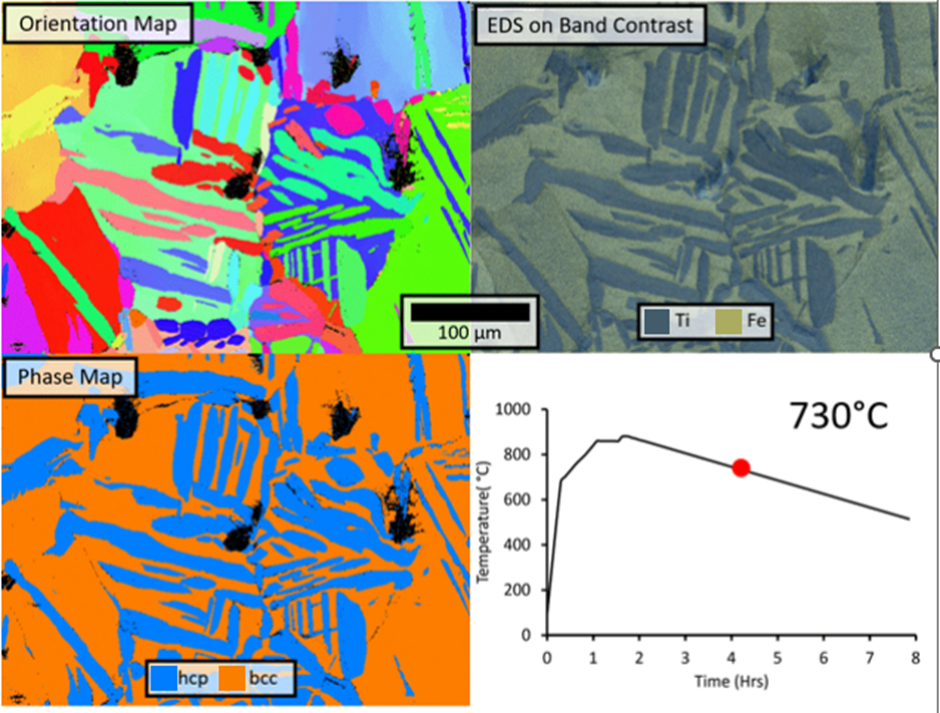High temperature EDS and EBSD analysis - enabling in-situ heating for direct observation of phase transformations in the SEM
- Abstract number
- 135
- Presentation Form
- Poster
- DOI
- 10.22443/rms.mmc2023.135
- Corresponding Email
- [email protected]
- Session
- Poster Session One
- Authors
- Mr Kim Larsen (2), Dr Haithem Mansour (2), Dr Jack Donoghue (1), Jiaqi Xu (1), Dr Albert Smith (3)
- Affiliations
-
1. Department of Materials, University of Manchester
2. Oxford Instruments
3. Tescan - UK
- Keywords
EDS, EBSD, SEM, in-situ, high temperature, IR, IR filters
- Abstract text
In-situ experiments in the SEM give the capability to perform heating and mechanical testing inside the chamber using dedicated heating & tensile stages. It helps the understanding of a range of phenomena from precipitation and phase transformations to diffusion and segregation in a large range of materials like metals, alloys, ceramics and composites. It allows metallurgists and material scientists to develop new materials with better properties and make best use of new manufacturing techniques such as 3D printing.
Energy Dispersive Spectroscopy (EDS) is the routine technique in SEM to analyse elemental distribution and composition within a sample. Electron Backscatter Diffraction (EBSD) is the routine technique in SEM to analyse crystallographic and structural differences within a sample. Combining EDS and EBSD provides a more comprehensive dataset and more information about the sample, however challenges related to high temperature experiments needs to be resolved in order for the analysis to be compatible with heating experiments.
High temperature experiments can be challenging due to the excess IR radiation that are emitted from the sample and the heating elements on the stage. Shielding on the stage has an influence, however the intensity of the IR signal will cause problems for normal EDS and EBSD analysis. EBSD has been used in combination with in-situ experiments for several years, however the solutions have often resulted in a reduced performance of the EBSD system, and the setup resulted compromises of room temperature analysis.
Using EDS at high temperature comes with technical challenges like the emission of visible and IR radiation, which can severely degrade the EDS detector performance. Oxford Instruments recently developed a unique solution that unlocks high temperature EDS analysis in the SEM enabling direct observation of chemical changes at high temperature. A novel solution for the SymmetryS3 EBSD detector has been developed, which unlocks all the benefits of this detector in combination with in-situ heating experiments without compromising capabilities for conventional room temperature analysis.
Without those solutions in place, in-situ heating experiments combined with EDS and EBSD would either not be possible or have significant risk of damage to the detector hardware. Now combined EDS and EBSD analysis is a reality for high temperature analysis.
Figure 1 – Showing EBSD orientation map, EBSD phase map, combined EBSD band contrast and EDS element map acquired from Ti-Fe alloy sample at 730°C.

